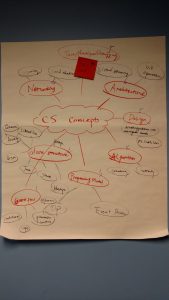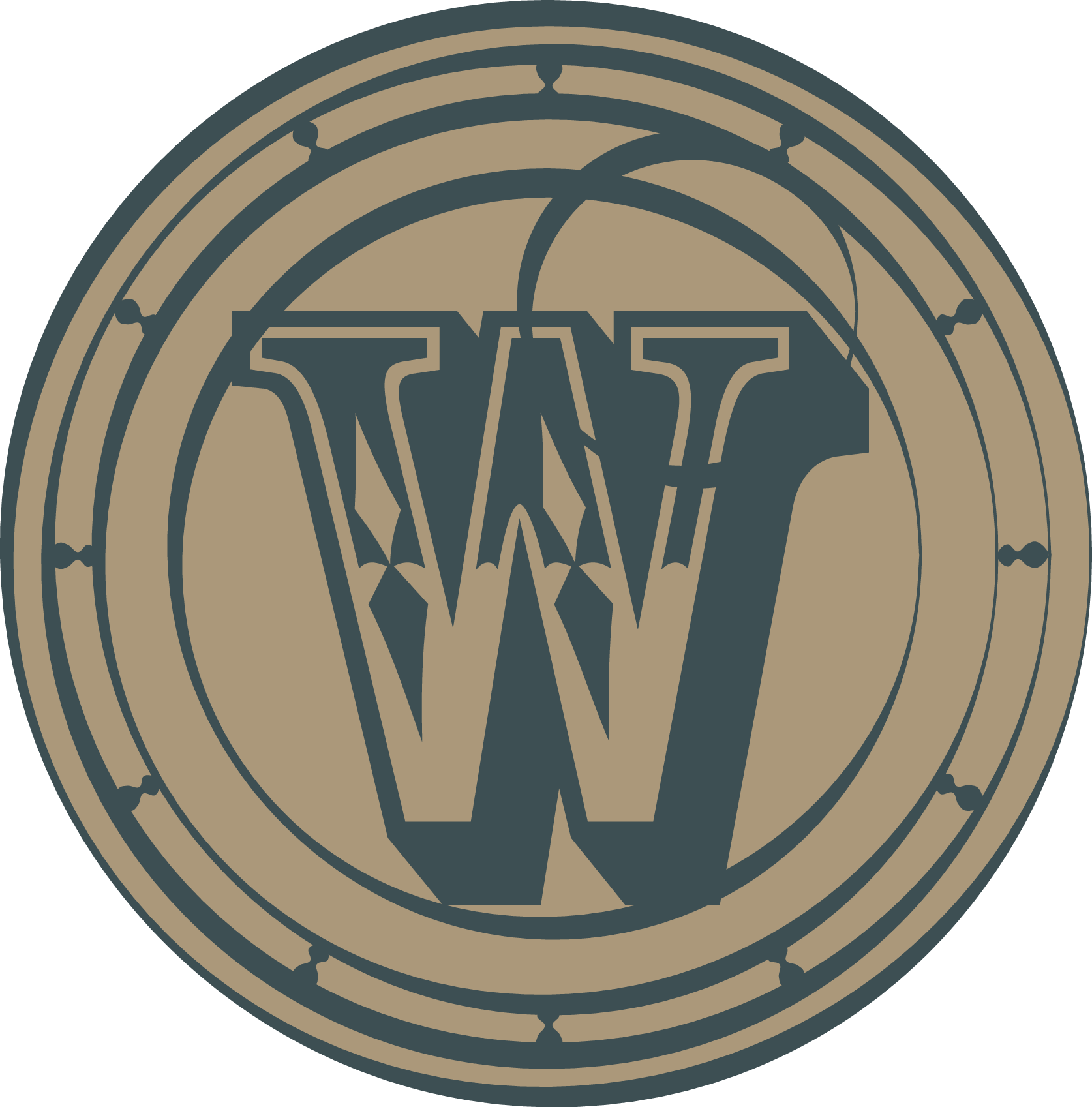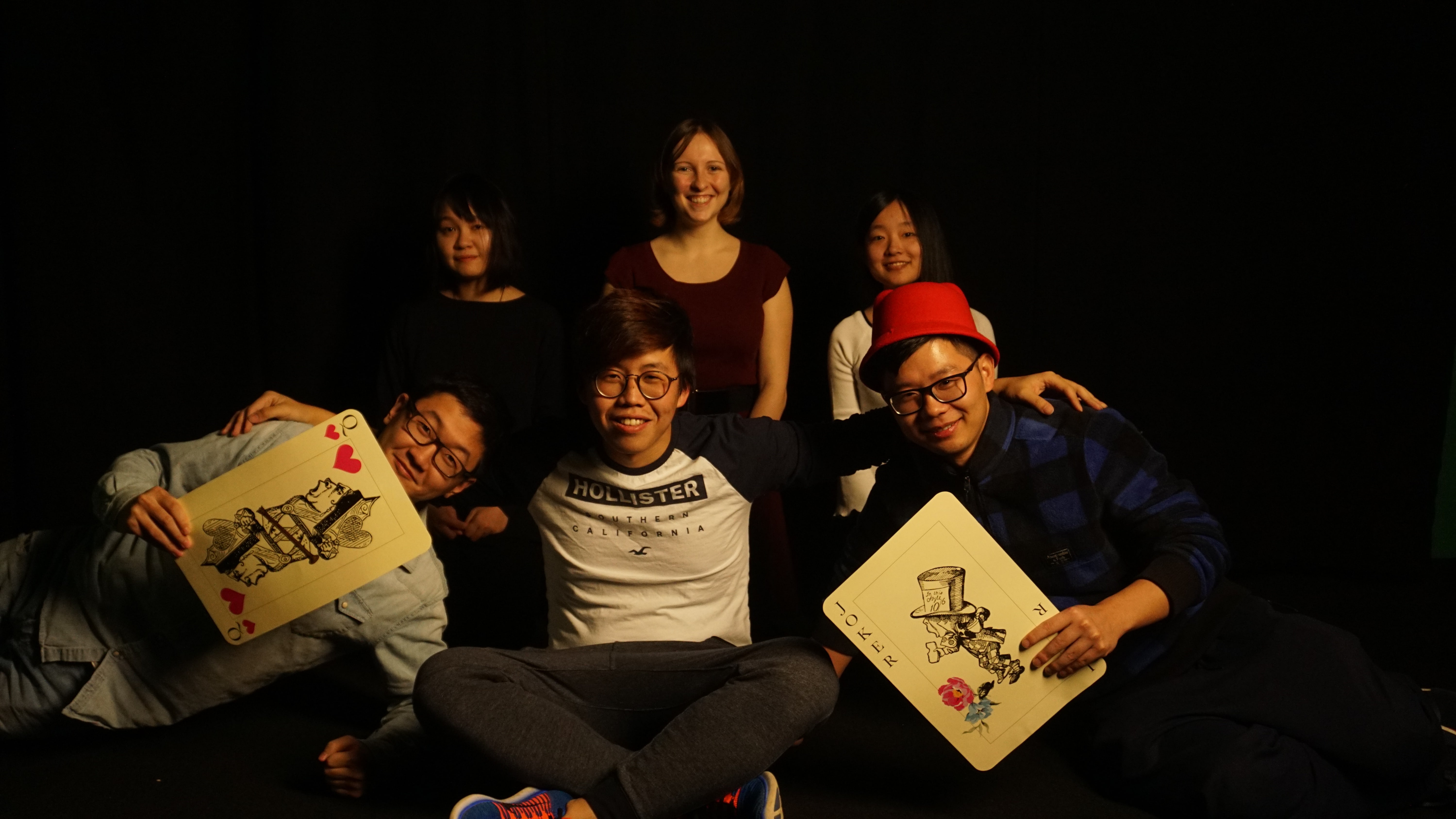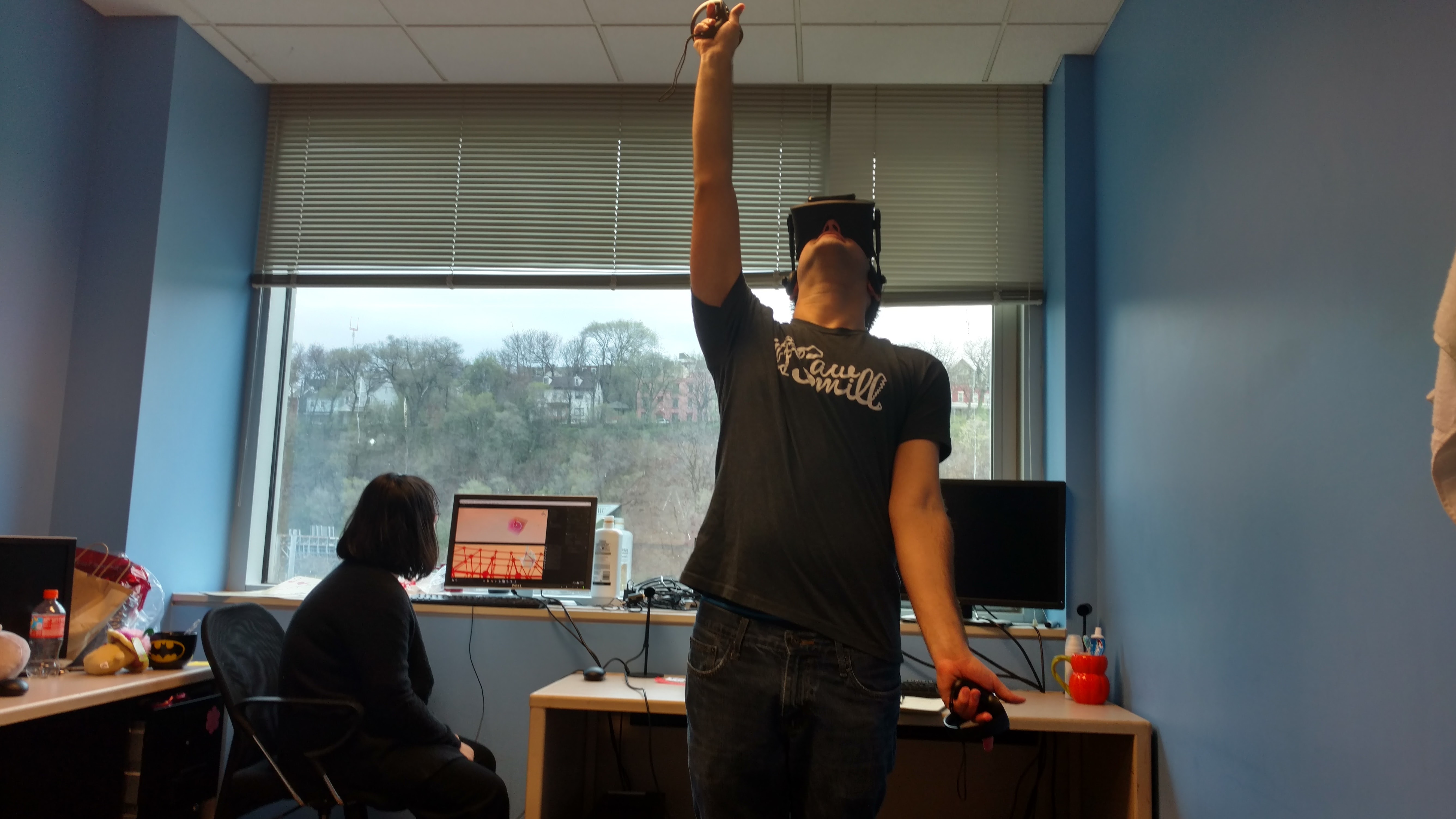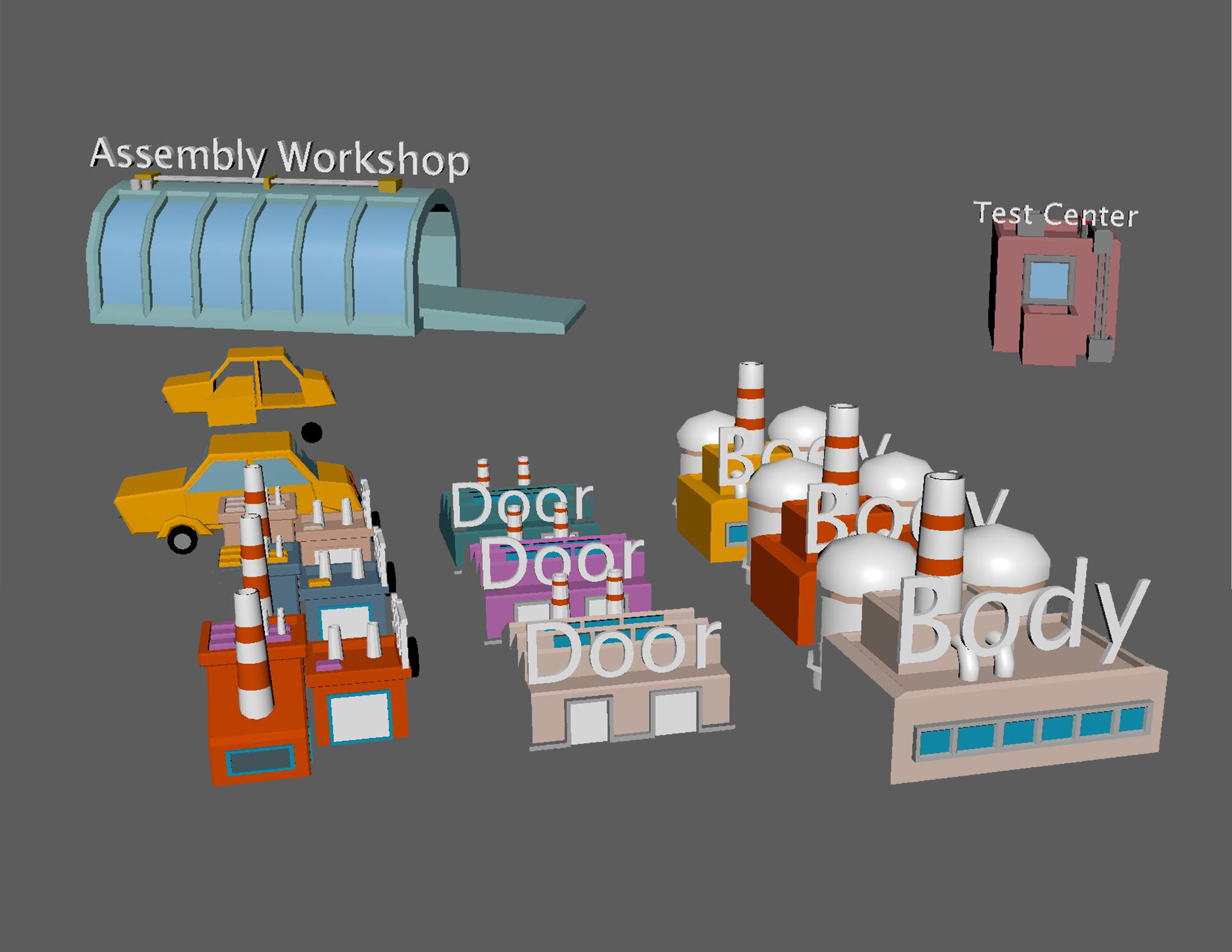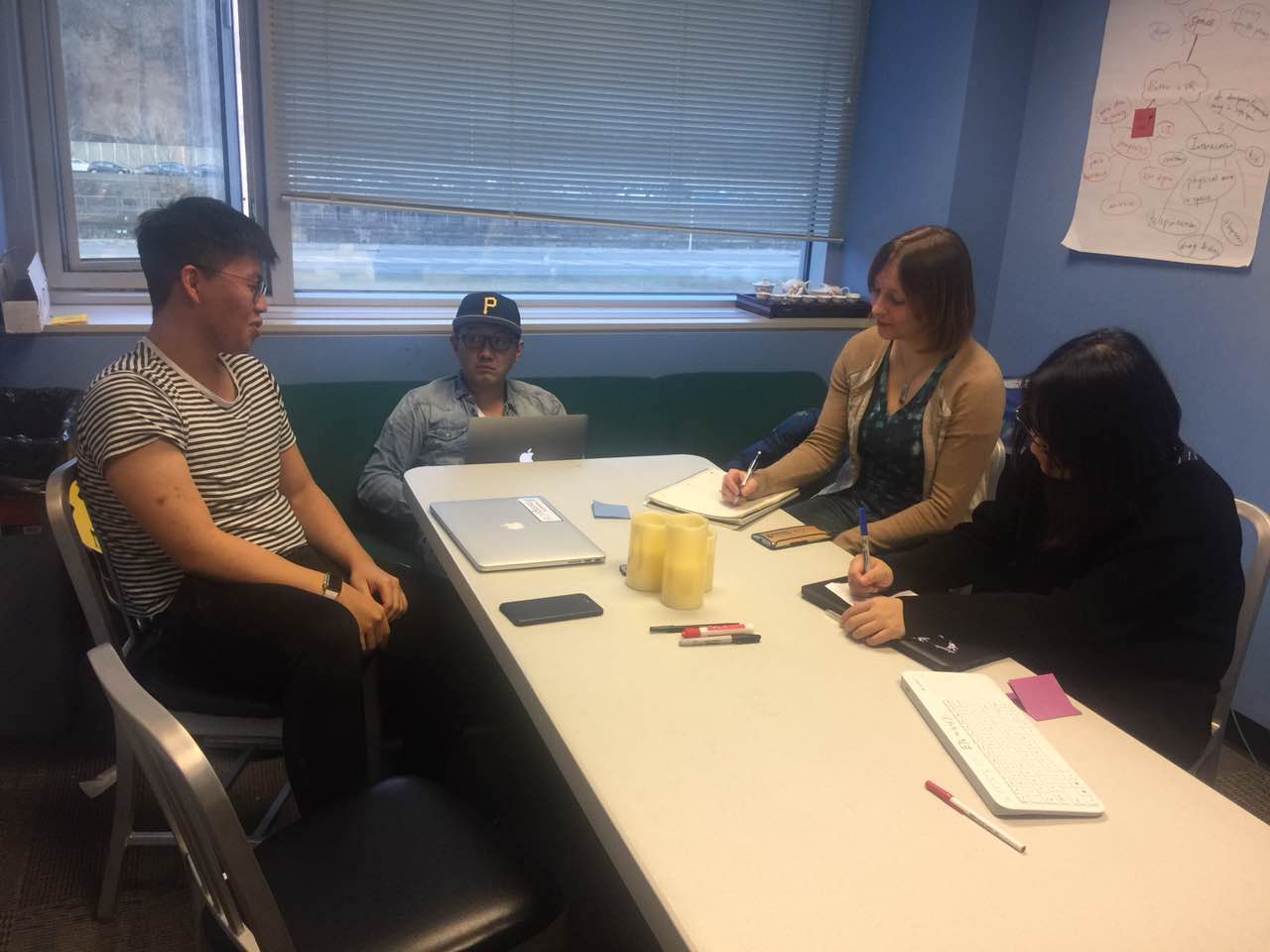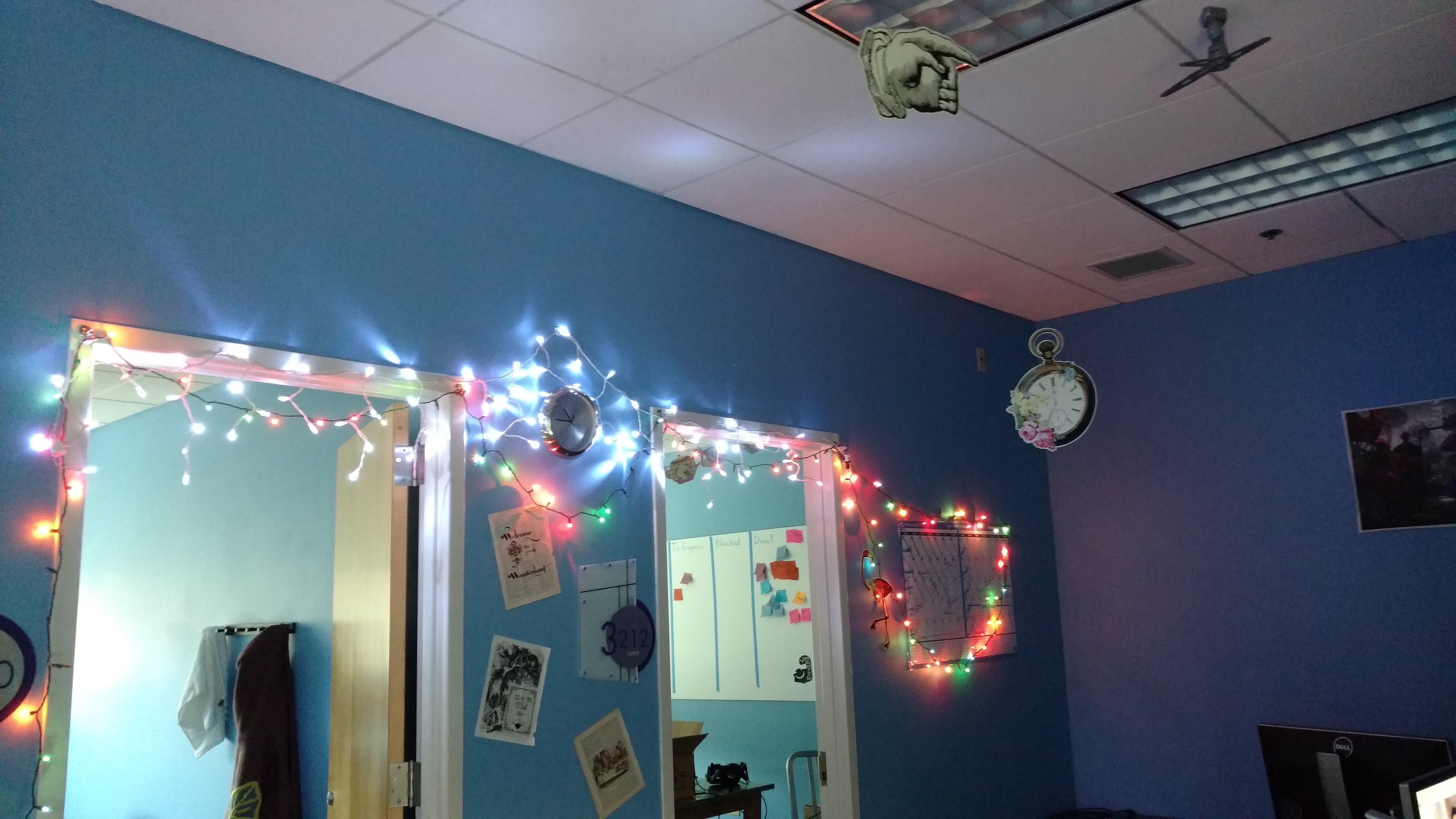Research
We did one more round of group research this week, focusing on the unique strengths of virtual reality, Digital Dream Labs, the use of virtual reality in schools, rapid prototyping, and virtual reality education games and interactions. Learning more about these topics helped us to clarify our project and how we might want to go about it, as well as strengthening our general knowledge base.
Brainstorming
We set ourselves a goals for this week of pitching our first set of ideas to our client during our normal weekly meeting on Friday. That was a bit fast, but seemed like a good thing to aim for. Then our client requested that we move our meeting to Thursday afternoon. That left us with two options: put off pitching for another week, or be ready to pitch on Thursday. We decided that waiting until next week was too long and we would rather push ourselves to pitch early.
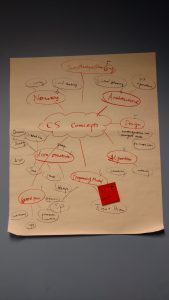
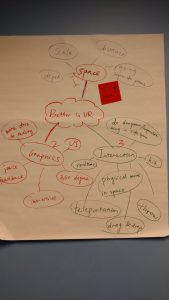
To start our brainstorming, we created mind maps of the two subjects we feel are most centrally important to our project: The unique strengths of virtual reality, and early computer science concepts. We came to this conclusion by talking with our client about how he hopes to be able to use our prototypes and results. He told us that the high-level question he wants us to answer is whether or not virtual reality has something new and unique to offer the world of computer science education. We believe that grounding our ideas in those two subjects will help us stay focused on answering that question.
At the beginning of the week, we randomly selected one topic from each of the mind maps, in this case “Space” and “Programming Models” and focused our brainstorming on ways to use the first to teach the second.
On Tuesday, we got together for a team brainstorming session. We started by each coming up with three ideas in ten minutes based on connecting these two categories. At the end of the ten minutes, we explained our ideas to each other. Then, we each took two ideas (that were not ours) and tried to come up with something new by combining elements of each. Finally, we each shared and discussed those new ideas. This got us thinking and gave us some feedback so that we could either build on those ideas or better flesh out our own ideas.
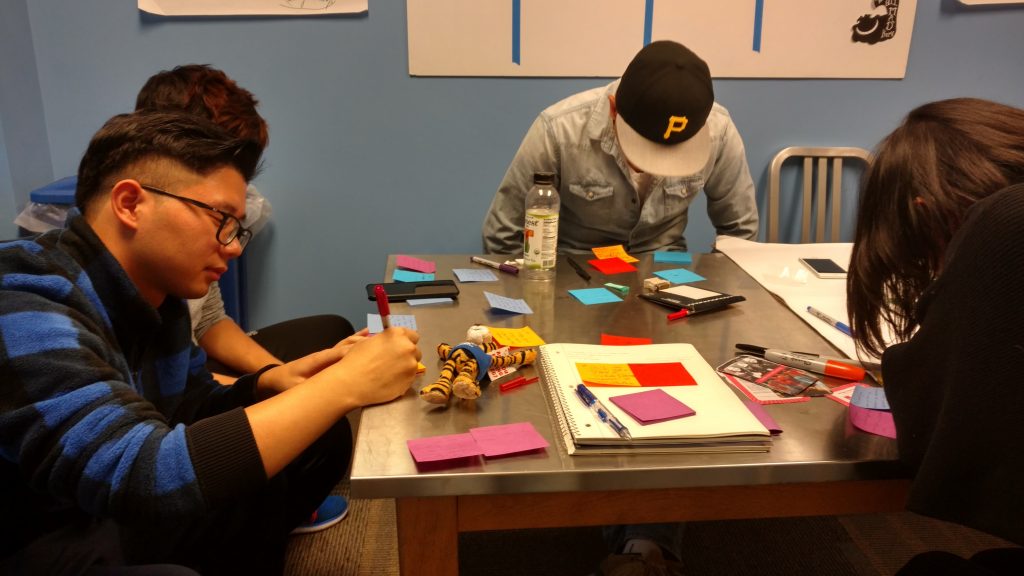
Internal Pitches
On Wednesday, we formally pitched our best one or two ideas to the rest of the team. We each made a short presentation detailing the computer science concept the idea would teach (generally object oriented programming or event driven programming this week), the mechanics and interactions involved, why we think the idea is well-suited to virtual reality, and other relevant information like which elements we think are reasonable to prototype in a short amount of time.
 During the presentations, we each rated each idea from 1-5 in each of four categories: it’s usefulness as an educational tool, how engaging we think it will be, how innovative we think it is, and whether or not it is better in virtual reality than any other medium. After the presentations, we totaled up the ratings for each idea and used those as a starting point for discussion. As we talked about the ideas, we distilled them into the core mechanics and interactions that we wanted to prototype, as there were a couple that showed up in several ideas. That gave us five core ideas that we felt had merit.
During the presentations, we each rated each idea from 1-5 in each of four categories: it’s usefulness as an educational tool, how engaging we think it will be, how innovative we think it is, and whether or not it is better in virtual reality than any other medium. After the presentations, we totaled up the ratings for each idea and used those as a starting point for discussion. As we talked about the ideas, we distilled them into the core mechanics and interactions that we wanted to prototype, as there were a couple that showed up in several ideas. That gave us five core ideas that we felt had merit.
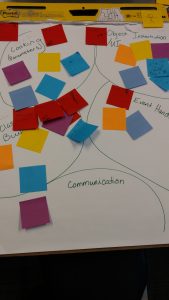 We decided that we should aim to pitch three ideas to our client, so we wrote the five ideas on a poster and each placed post-its on the three ideas we wanted to work on most. Three ideas were clearly more interesting to us as a team than the other two, so we decided to move forward with pitching those.
We decided that we should aim to pitch three ideas to our client, so we wrote the five ideas on a poster and each placed post-its on the three ideas we wanted to work on most. Three ideas were clearly more interesting to us as a team than the other two, so we decided to move forward with pitching those.
Pitching to the Client
On Friday, we pitched those three ideas to our client. The process went fairly smoothly (especially for the first round) and we learned a lot about what we can be doing better in the future.
In particular, our first idea, a virtual reality cooking experience that would teach parameter passing and functions, was quite confusing to our client. There were a couple of reasons for the confusion. First, two of use were pitching the idea together: Joe, who originated the idea, and Nick, who helped improve the idea before the pitch. There were some misunderstandings between them (as well as in the rest of the team) that became apparent during the pitch. Second, the idea itself was not clearly tied to teaching the concepts to the players. We had not spent enough time thinking about how the mechanics and design truly related to teaching the concepts.
Designing everything around “how do we teach this” is one of the most valuable pieces of feedback we got from our client. The second idea we pitched, combining small components to build a complex object, has a similar problem to the first idea: it is not clear which concepts it would teach and how. Our client suggested that it is similar to teaching programming by building robots and that we might want to research that and how we might improve it by putting it in virtual reality.
Our third idea was a sandbox solar system creation experience that would teach the concepts of classes and object instantiation. This one we explained much more clearly and specifically, and our client felt that it would make a cool visualization for the relationship between classes and objects. This was the most promising of the ideas we pitched, so we’ll be started development on it next week, as well as continuing to come up with new ideas to pitch each week.
Theming
We got our decorations this week, and had a lot of fun decorating the room based on Alice in Wonderland. Our meeting room is themed around the mad tea party, with teapots and cups hanging from the ceiling and a tea set on the windowsill. In our front room we have lots of Alice in Wonderland themed artwork, including a couple more hanging from the ceiling, and lights over the doorways to the other rooms.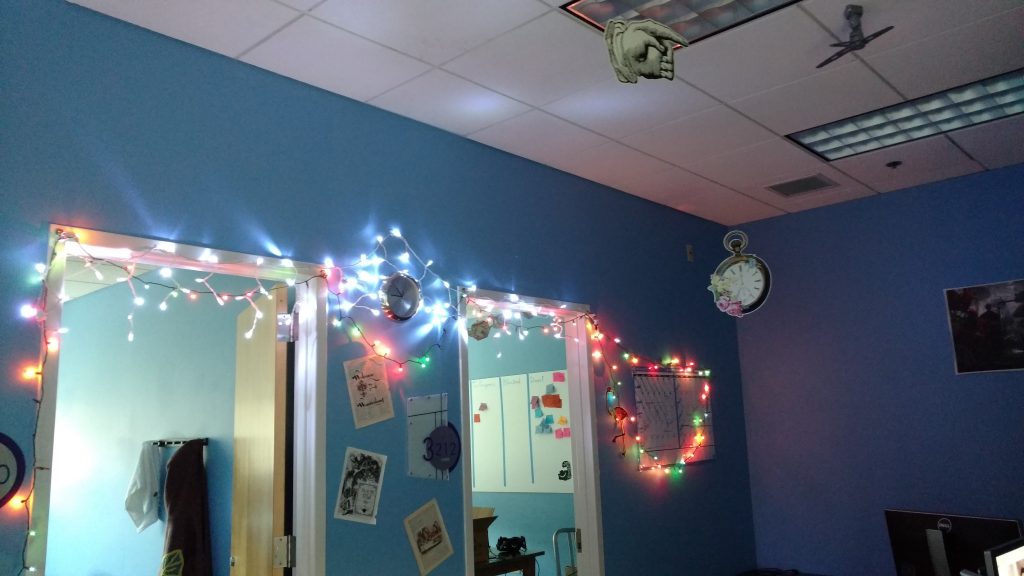
We also took headshots to make into our team photo…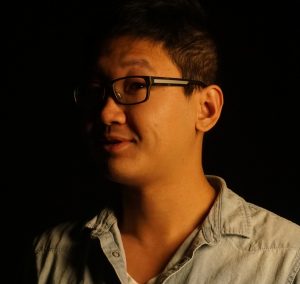
…plus a couple group photos just for fun.
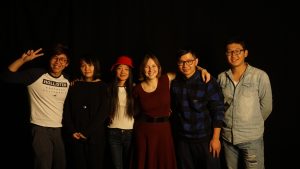
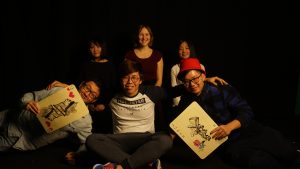
Moving Forward
Next week we will get started building the solar system prototype and come up with more ideas to pitch to Eric. This will be our chance to start iterating on our process and figuring out what works best for us. Our current plan is that four of us (Miriam, Luna, Nick, and Joe) will start developing the prototype while the other two (Zack and Jiawen) will focus on brainstorming more ideas. Our specific roles will rotate each week, but we think that two and four is a good ratio to start out with. Next week’s topics to pitch are using virtual reality-specific interactions to teach testing, analysis, debugging, and design.
